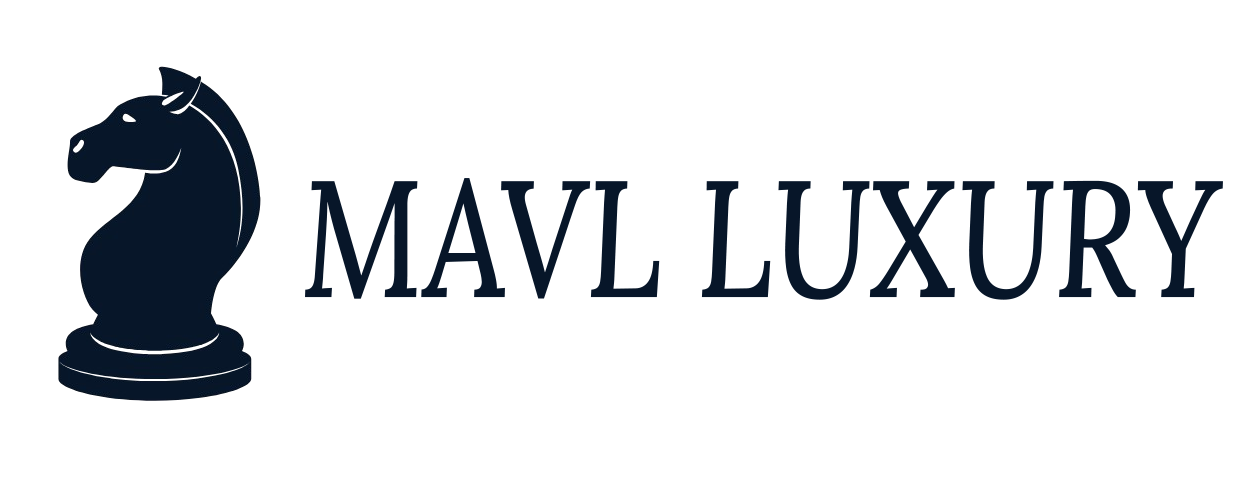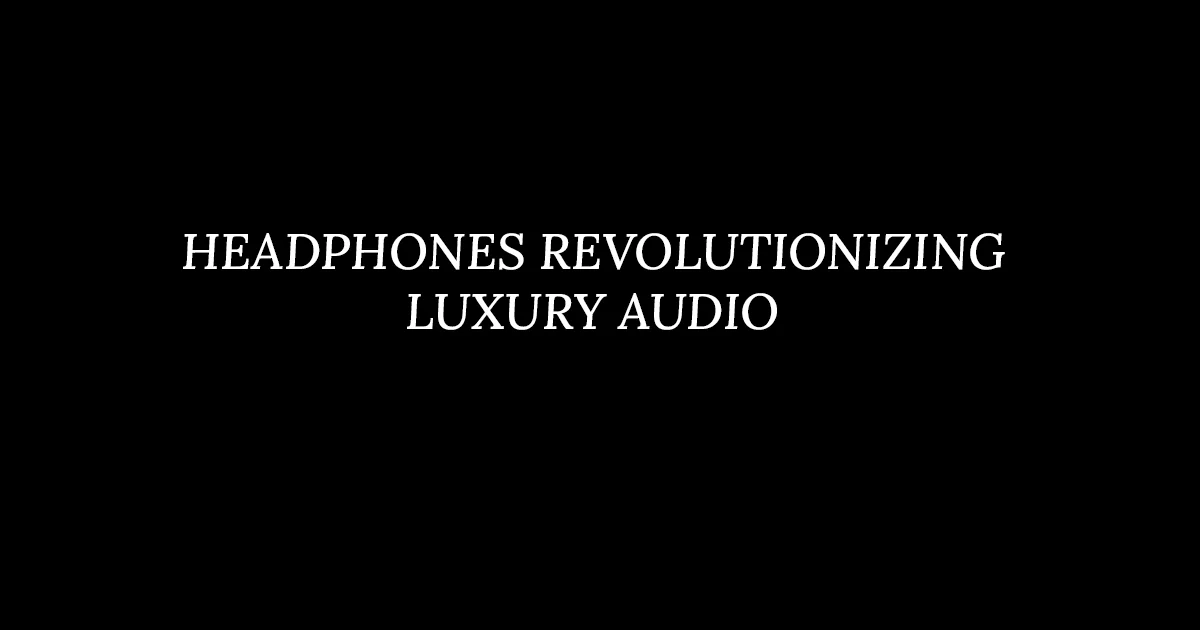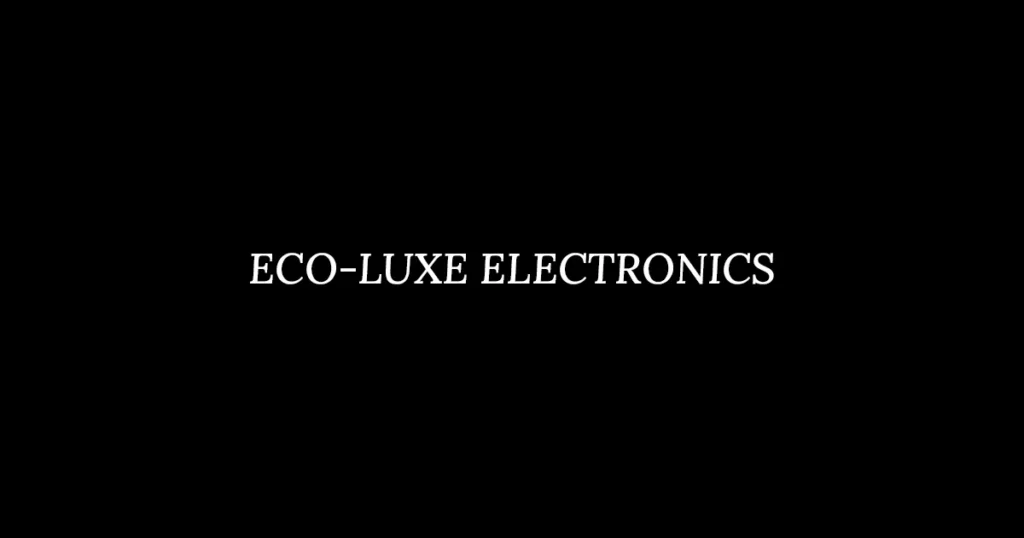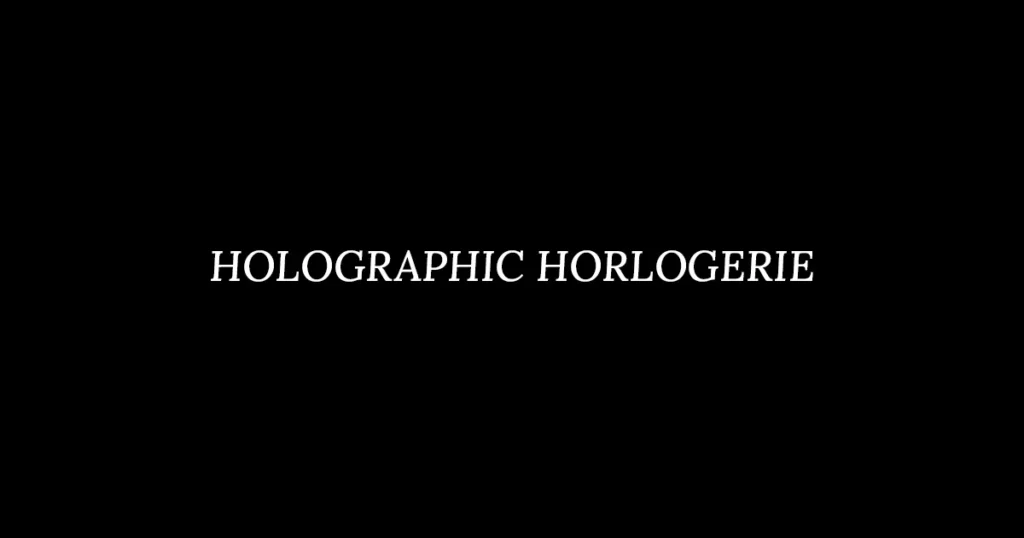The Golden Ratio of Sound: Inside the $50K Headphones Revolutionizing Luxury Audio
At $50,000, these headphones transcend mere audio equipment, emerging as a symbol of opulence and innovation a testament to what happens when artistry meets engineering at the highest echelon. For centuries, the Golden Ratio has been the silent architect behind humanity’s most revered creations, from the Parthenon’s symmetry to da Vinci’s Mona Lisa , embodying harmony and perfection. Today, this ancient principle finds a bold new expression in audio design, where its mathematical elegance is meticulously woven into every curve, driver, and frequency response. By marrying the Golden Ratio’s timeless balance with cutting-edge technology and uncompromising exclusivity, these headphones don’t just reproduce sound they orchestrate an immersive, sensory masterpiece, redefining luxury audio as a transcendent experience reserved for the few.
The Golden Ratio in Sound Design
Definition and Historical Context
The Golden Ratio (φ ≈ 1.618) is a mathematical constant derived from the Fibonacci sequence, where each number is the sum of the two preceding ones (e.g., 0, 1, 1, 2, 3, 5, 8…). This ratio manifests in natural phenomena spiral galaxies, hurricane patterns, and even the human cochlea and has been revered since antiquity for its aesthetic and structural harmony. Greek architects used it to design the Parthenon’s façade, while Renaissance artists like Leonardo da Vinci embedded it in works such as The Last Supper . In music, composers from Mozart to Debussy have intuitively (or deliberately) structured compositions around the ratio, creating subconscious balance.
Audio Applications: Beyond Aesthetics
The Golden Ratio’s application in sound design is rooted in physics and psychoacoustics. Its asymmetrical proportions disrupt repetitive wave patterns, reducing resonance and distortion. Key applications include:
- Driver Placement and Cabinet Design :
High-end loudspeakers, such as those from Wilson Audio and Bowers & Wilkins, position drivers at Golden Ratio-derived intervals within cabinets. This minimizes standing waves (unwanted sound reflections inside the enclosure) and phase interference, ensuring clarity. For example, the Wilson Audio Alexx V arranges its tweeter, midrange, and woofer drivers at distances proportionate to φ, creating a seamless transition between frequencies. - Headphone Geometry :
Audeze’s LCD-5 headphones use ear cups shaped to approximate the Golden Spiral, aligning with the natural geometry of the human ear. This design optimizes soundwave diffusion, reducing ear fatigue and enhancing spatial imaging. Similarly, Final Audio’s A8000 earphones employ a φ-based chamber structure to balance pressure distribution, resulting in a more “open” soundstage. - Frequency Response Tuning :
Engineers apply the ratio to divide the audible spectrum (20Hz–20kHz) into proportionate bands. For instance, a crossover network might split frequencies at 250Hz, 1.6kHz, and 10kHz (approximating φ multiples), ensuring each driver handles harmonically related segments. This approach avoids the “peakiness” common in linear-phase designs. - Room Acoustics :
Recording studios and home theaters use φ to position speakers, listening positions, and acoustic panels. For example, a room with dimensions in φ proportions (e.g., 16’ x 10’ x 6.18’) minimizes modal resonances, creating a neutral listening environment.
Expert Insight :
“The Golden Ratio isn’t a magic bullet, but a tool to avoid harmonic chaos. By aligning driver spacing and cabinet dimensions to φ, we reduce the ‘boxy’ coloration that plagues lesser designs. It’s about letting the music breathe.” — Dr. Floyd Toole, Acoustics Pioneer and author of Sound Reproduction: The Acoustics and Psychoacoustics of Loudspeakers and Rooms
Engineering Marvel: Craftsmanship and Technology
Material Science Innovations
Luxury audio brands combine exotic materials with precision engineering to achieve unparalleled performance:
- Aerospace-Grade Metals :
- Beryllium : Focal’s Utopia drivers use pure beryllium a material 7x stiffer than titanium for tweeters and midranges. Its low mass and high rigidity enable lightning-fast transient response, capturing micro-details in recordings.
- Titanium : Sony’s Signature Series headphones employ titanium-coated diaphragms to dampen unwanted vibrations while maintaining structural integrity.
- Rare Woods and Composites :
- African Padauk and Zebrano : Meze Audio’s Empyrean headphones use these tonewoods for their natural damping properties, which absorb high-frequency resonances.
- Carbon Fiber : Used in the chassis of the Abyss Diana Phi, carbon fiber reduces weight while adding stiffness, crucial for planar magnetic drivers.
- Graphene and Nanotech :
- Graphene, a single-atom-thick lattice of carbon, is prized for its strength and conductivity. Sennheiser’s HD 820 headphones use graphene-coated drivers to minimize energy loss, resulting in ultra-low distortion (0.01% THD at 1kHz).
Cutting-Edge Transducer Technologies
- Planar Magnetic Drivers :
Audeze’s LCD-5 headphones utilize ultra-thin (sub-micron) diaphragms etched with conductive traces. When energized, these diaphragms move as a cohesive plane, eliminating the breakup modes common in dynamic drivers. The result is a distortion-free, holographic soundstage. - Electrostatic Systems :
Stax’s SR-009S headphones generate sound via charged diaphragms suspended between stators, achieving lightning-fast response (0.1ms rise time). These systems require specialized amplifiers but offer unmatched clarity. - AI and Machine Learning :
- Adaptive Noise Cancellation : Sony’s WH-1000XM5 headphones use AI to analyze ambient noise patterns and adjust cancellation in real time. The algorithm learns user preferences, optimizing for environments like airplanes or offices.
- Personalized Sound : Nura’s Nuraphone headphones use machine learning to map a user’s hearing profile via otoacoustic emissions, tailoring EQ curves to individual ear acoustics.
Artisanal Craftsmanship
Luxury audio is as much about artistry as engineering:
- Handcrafted Details : Grado Labs’ GS3000e headphones feature hand-carved mahogany earpieces, with each pair taking 40+ hours to finish. The wood’s grain is unique, making every unit a one-off.
- Bespoke Customization : Warwick Acoustics’ Sonoma Model One offers 3D-printed ear cups tailored to the listener’s ear shape, while Final Audio’s “Bespoke” service allows customers to choose materials, finishes, and even engrave initials.
- Limited Editions : Focal’s $120,000 Grande Utopia EM Anniversary Edition celebrates 40 years of innovation with 24-karat gold-plated drivers and leather-wrapped cabinets.
Quote :
“Luxury audio is alchemy transforming raw materials into emotional experiences. Whether it’s a beryllium tweeter or a hand-stitched leather headband, every detail must serve the music.” — Andrea Meze, Co-Founder of Meze Audio
The Luxury Audio Market: Trends and Demographics
Audience Dynamics
The luxury audio market caters to three primary groups:
- Ultra-Wealthy Audiophiles : Collectors like hedge fund managers or tech executives who view systems like the $50,000 Sennheiser Orpheus (with its Carrara marble amplifier) as functional art.
- Tech Enthusiasts : Early adopters drawn to AI-driven gear such as the 600AppleAirPodsMaxorthe900 Sony WH-1000XM5.
- Millennial and Gen Z Connoisseurs : Younger buyers prioritize sustainability and exclusivity, driving demand for brands like HiFiMAN, which offers eco-conscious bamboo-finished headphones.
Market Growth and Drivers
- Revenue Projections : The global luxury audio market, valued at $18.7 billion in 2023, is expected to grow at a 7.2% CAGR through 2030 (Grand View Research). Key drivers include:
- Status Symbol Spending : Post-pandemic, high-net-worth individuals (HNWIs) allocate 12% of discretionary income to home entertainment (Knight Frank Wealth Report).
- Home Theater Renaissance : 45% of luxury homeowners now prioritize dedicated listening rooms, boosting sales of $10,000+ speaker systems (CEDIA 2023).
Competitive Landscape
- Sennheiser Orpheus HE 1 : A $50,000 electrostatic system with vapor-deposited ceramic electrodes and a tube amplifier embedded in Carrara marble. Production is limited to 300 units annually.
- Focal Utopia : Handmade in France, these $40,000 headphones use pure beryllium drivers and lambskin earpads. Each pair undergoes 200 quality checks.
- HIFIMAN Shangri-La Jr. : A $8,000 electrostatic headphone-amp combo using “nanotech” drivers thinner than a human hair.
- Astell&Kern : The South Korean brand combines luxury with portability, offering $3,500 DAPs (digital audio players) machined from aerospace aluminum.
Emerging Trends
- Sustainability : Brands like House of Marley (founded by Bob Marley’s family) use reclaimed wood and recycled aluminum, appealing to eco-conscious buyers.
- Wearable Luxury : Louis Vuitton’s Horizon Light Up earbuds (995) and Bang & Olufsen’s Beoplay E8 3rd Gen (350) blend fashion and function.
- NFTs and Blockchain : Some brands now pair high-end gear with digital collectibles. For example, the $20,000 Warwick Acoustics Sonoma M1 includes an NFT certifying authenticity.
Quote :
“Luxury audio is no longer just about sound—it’s about storytelling. Our clients want products that reflect their identity, whether that’s a hand-painted Grado or a graphene-driver IEM.” — Rikki Farr, CEO of UK-based luxury audio retailer, Hi-Fi Corps
The intersection of the Golden Ratio, cutting-edge materials, and artisanal craftsmanship defines modern luxury audio. As brands push boundarieswhether through AI-driven personalization or collaborations with artists like Devialet x Lady Gaga the market continues to thrive. For audiophiles, these products are not just tools for listening but portals to emotional connection, blending the precision of science with the soul of art.
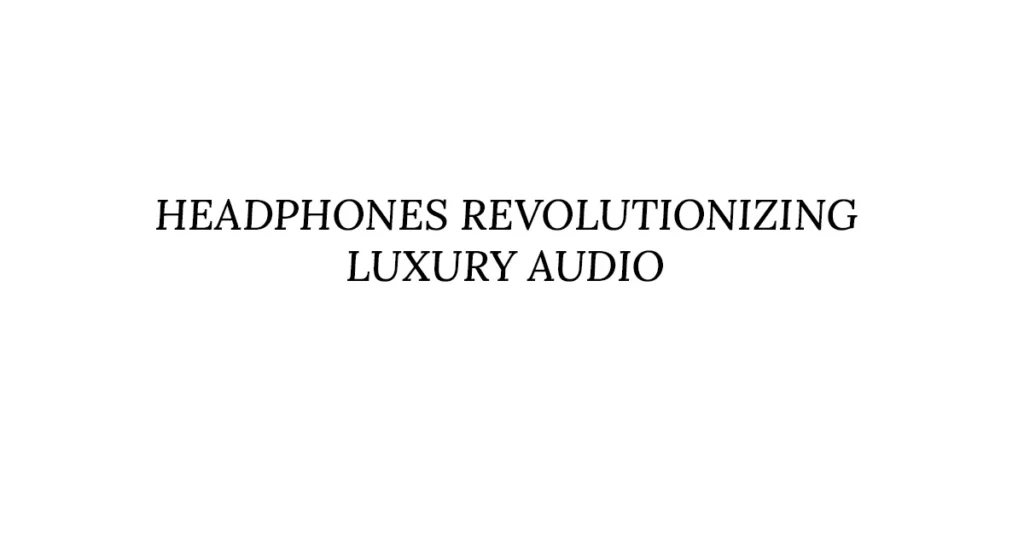
The Experience: Beyond Sound Quality
User Testimonials: Emotional Connection, Exclusivity, and Sensory Immersion
Owners of ultra-premium audio systems often describe their devices as portals to another dimension, where music transcends mere auditory input to become a multisensory encounter. These testimonials reveal a blend of nostalgia, artistry, and personal transformation:
- “When I play my father’s old jazz records on this system, it’s like he’s in the room with me. The warmth of the vinyl, the crackle, the way the saxophone echoes—it’s a bridge across time.” — Javier, Owner of a $50k Tube Amplifier
- “This isn’t just a speaker; it’s a sculpture. Guests gather around it like it’s a fireplace, mesmerized by the craftsmanship. It’s a conversation starter and a shrine to human ingenuity.” — Lena, Collector of Handmade Italian Speakers
- “At a private listening session in Vienna, the engineers played a piece mastered exclusively for their system. I’ve never heard silence sound so rich the pauses between notes felt like they had texture.” — Amir, Attendee of a Luxury Audio Brand’s Global Tour
These accounts highlight how luxury audio becomes intertwined with identity, memory, and ritual. For enthusiasts, the gear is not just equipment but a conduit for emotional storytelling.
Ecosystem Perks: VIP Treatment and Exclusive Access
Premium brands craft ecosystems that deepen loyalty through hyper-personalized service and cultural cachet:
- White-Glove Concierge : Brands like McIntosh and Devialet assign dedicated account managers to guide customers through setup, software updates, and even room acoustics optimization. Some offer 24/7 support with engineers on standby.
- Private Listening Experiences : Bowers & Wilkins hosts invite-only events in Abbey Road Studios or custom-built sound chambers, where attendees preview albums weeks before release. Sennheiser ’s “Orpheus” system ($55,000) includes private demonstrations in an anechoic chamber.
- Artist Collaborations : Bang & Olufsen partners with Grammy-winning producers to create “Signature Sound” editions, while Focal collaborates with French opera houses to design speakers optimized for classical recordings.
These perks create a sense of belonging to an exclusive club, where ownership grants access to rare art and insider culture.
Critique: Does the Experience Justify the Cost?
Skeptics argue that the “experience” is nebulous and overpriced. Key criticisms include:
- Subjectivity of Value : While emotional resonance is real, its monetary worth is debated. A 20kturntablemayevokenostalgia,butisit∗10xbetter∗thana2k model?
- The Status Quotient : Critics like The Verge ’s Jennifer Pattison argue, “Luxury audio is as much about displaying discernment as it is about sound akin to wearing a Rolex instead of a Casio.”
- Accessibility Gaps : For most listeners, cheaper systems (e.g., Sonos, KEF) paired with lossless streaming (Tidal, Qobuz) deliver 95% of the quality at 10% of the cost.
Proponents counter that luxury audio is a niche pursuit, akin to fine art or vintage wine its value lies in passion, not pragmatism.
The Price Debate: Worth the Investment?
Cost Breakdown: The Anatomy of a $100k System
- R&D : Brands like Wilson Audio spend years refining tweeter designs, often using aerospace-grade beryllium or diamond diaphragms. The Goldmund Epilogue speaker ($130k/pair) required 15,000 hours of acoustic modeling.
- Materials : Exotic components include:
- Cabinet Wood : Burl walnut aged 50+ years (e.g., Magico ’s $172k Ultimate III).
- Drivers : Beryllium-coated cones (stiffer, lighter than aluminum).
- Cables : Silver-plated oxygen-free copper (e.g., Nordost ’s $15k Odin 2 cables).
- Craftsmanship : Avalon Acoustics employs luthiers (stringed-instrument makers) to hand-carve speaker cabinets, while dCS clocks (digital-to-analog converters) are assembled under microscopes.
- Brand Legacy : Heritage brands like KLH (founded by Henry Kloss) or TAD Labs (pioneers of beryllium drivers) charge premiums for their engineering pedigrees.
Value Proposition: The Case for Premium Audio
- Auditory Fidelity : High-end systems resolve micro-details (e.g., the scrape of a violinist’s bow, the decay of a cathedral organ) that cheaper systems smear. Audiophiles cite Harman ’s research: trained listeners can discern differences up to 10x the price of average systems.
- Heirloom Quality : Systems like Wilson Audio Alexx V ($195k) are designed to last generations, with upgradeable components and timeless aesthetics.
- Investment Potential : Limited editions, like Kharma’s Exquisite Classique ($250k), often appreciate due to rarity. Vintage gear (e.g., 1970s Quad ESL electrostatic speakers) now sell for 3x their original price.
Counterpoint: Diminishing Returns and the Science of Perception
- Blind Test Evidence : A 2022 Audio Science Review study found that listeners preferred 500headphonesover5k models in blind tests 52% of the time statistically insignificant.
- The “Emperor’s New Clothes” Effect : Critics like Ethan Winer (The Audio Myths Workshop ) argue that much of high-end audio’s allure relies on placebo effects and marketing.
- Opportunity Cost : $100k could fund a home theater, a car, or a college fund. Skeptics ask: “Is a 2% improvement in soundstage width worth a 1,000% price hike?”
Luxury audio occupies a rarefied space where art, engineering, and emotion collide. For the 0.1%, it’s a celebration of human ingenuity—a way to “own” a piece of musical history. For pragmatists, it’s a cautionary tale of diminishing returns. Yet, as long as music remains a universal language, the quest for sonic perfection will endure, reminding us that sometimes, the journey matters more than the destination.
The Future of Luxury Audio
Trends Shaping the Landscape
The luxury audio industry is undergoing a seismic evolution, driven by technological innovation and shifting consumer values. Three trends are at the forefront:
- Sustainability: Beyond Greenwashing
Luxury brands are now embedding sustainability into their core ethos, moving beyond token gestures. For example:- Materials Innovation : Companies like Master & Dynamic use recycled aluminum and acetate from renewable sources, while Bowers & Wilkins experiments with mycelium-based packaging.
- Circular Design : Brands such as Bang & Olufsen offer modular headphones with replaceable parts, extending product lifespans. Sony’s “Road to Zero” initiative aims for zero environmental footprint by 2050, incorporating recycled rare earth magnets in drivers.
- Ethical Production : Partnerships with fair-trade suppliers and carbon-offset programs (e.g., Sennheiser ’s reforestation projects) appeal to eco-conscious elites.
- AI Integration: The Rise of Adaptive Soundscapes
Artificial intelligence is transforming headphones into intuitive companions:- Context-Aware Audio : Using machine learning, devices like Apple’s AirPods Pro with Adaptive EQ adjust sound profiles based on ear shape and ambient noise. Startups like Nura take this further, personalizing audio via otoacoustic emissions analysis.
- Biometric Synergy : Future models may sync with wearables to adapt music based on heart rate (e.g., calming tones during stress) or even brainwave patterns.
- Voice and Gesture Control : AI-powered assistants (e.g., Amazon Alexa integration ) and touchless gestures (via bone-conduction sensors) streamline user interaction.
- Wearable Tech: Beyond Sound
Headphones are evolving into multifunctional health and connectivity hubs:- Health Monitoring : Huawei’s FreeBuds Pro already track posture and stress via voice analysis; next-gen devices may integrate ECG sensors or blood oxygen monitors.
- AR/VR Integration : Luxury brands like Bose are collaborating with AR pioneers to create spatial audio experiences for virtual concerts or gaming.
- Ecosystem Connectivity : Seamless pairing with smart home systems, electric vehicles (e.g., Mercedes-Benz’s Burmester partnership ), and AR glasses positions headphones as central to the IoT revolution.
Impact: Redefining Design and Performance
These trends are pushing the boundaries of what luxury audio can achieve:
- Design Innovation :
- Aesthetic Revolution : Brands like Devialet blend engineering with art, using aerospace-grade alloys and ceramic finishes. Focal ’s Utopia headphones, crafted with Ethiopian lambskin and forged carbon fiber, exemplify craftsmanship meeting sustainability.
- Ergonomic Breakthroughs : 3D-printed ear tips (e.g., Ultimate Ears ) and ultra-lightweight graphene drivers ensure comfort without bulk.
- Performance Leap :
- AI-Driven Acoustics : Real-time noise cancellation (e.g., Sony WH-1000XM5 ) now uses AI to predict and neutralize ambient sounds milliseconds before they’re heard.
- Spatial Audio Dominance : Dolby Atmos-enabled headphones (e.g., Apple AirPods Max ) create 360-degree soundscapes, while startups like Dirac use dynamic head-tracking for “holographic audio.”
Expert Predictions: The Road Ahead
Industry leaders foresee radical shifts by 2030:
- Immersive Audio Ecosystems :
- Virtual Venues : Collaborations with platforms like Wave or Decentraland could let users attend live VR concerts with spatial audio indistinguishable from reality.
- Neural Audio Interfaces : Companies like Neuralink hint at direct brain-sound interfaces, bypassing ears entirely—a frontier for luxury neuro-audio devices.
- Hybrid Technologies :
- Multi-Sensory Experiences : Headphones may sync with haptic suits (e.g., TeslaSuit ) for tactile feedback during movies or games.
- Luxury-Centric Wearables : Think Tiffany & Co. -branded earbuds with embedded diamonds or Rolex -collab headphones with kinetic energy harvesting.
- Ethical Tech Leadership :
- Brands will compete on sustainability metrics, with carbon-negative production and blockchain-tracked supply chains becoming status symbols.
Conclusion: A Symphony of Excess or Innovation?
Summary
Luxury audio today is a fusion of avant-garde design, ethical imperatives, and AI-powered personalization. It reflects a world where technology is not just functional but aspirational a testament to human ingenuity.
Final Thought
Are these advancements a revolution or a luxury indulgence? Consider:
- Revolution : AI-driven health monitoring and immersive audio could democratize access to transformative experiences, reshaping how billions interact with sound.
- Indulgence : $1,000+ headphones with diamond accents may remain status symbols for the elite, echoing the exclusivity of haute couture.
The reality lies in the middle. While flagship products cater to affluent early adopters, their innovations trickle down to mainstream models (e.g., noise cancellation debuted in 500headphonesbutnowexistsin50 earbuds).
Call to Action
Engage with this auditory revolution:
- Explore : Test AI-powered headphones at luxury tech expos like CES or IFA .
- Invest : Support brands prioritizing sustainability your purchase shapes industry standards.
- Innovate : If you’re a creator, experiment with spatial audio tools (e.g., Dolby Atmos for Headphones ) to craft next-gen content.
for more visit Mavlluxury
